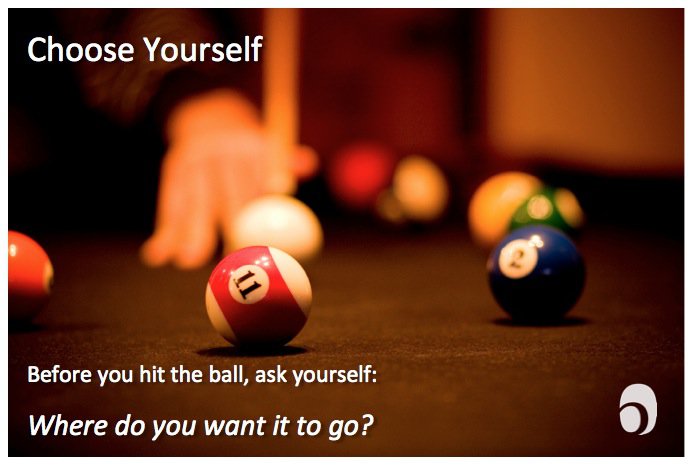 I’m a terrible, absolutely awful pool player. But I’ve noticed something intriguing: In this game, there is only ONE possible action. Hit the white ball. Your only “move,” your only way to affect the results, is to hit the white ball. Yet different results occur each time.
I’m a terrible, absolutely awful pool player. But I’ve noticed something intriguing: In this game, there is only ONE possible action. Hit the white ball. Your only “move,” your only way to affect the results, is to hit the white ball. Yet different results occur each time.
And is it enough to just whack the ball? Despite my paucity of pool prowess, usually I am not so pathetic as to simply want to hear the “crack” of the cue. I actually want to get a ball into a pocket! (Preferably one of my own, but honestly, sometimes I’m happy to get any colored ball sunk.)
So probably, it’s worth pausing to think: What is the result I want?
I would suggest this is true in all of our interactions. I’m talking to a potential client about a project. I’m listening to my wife talk about a problem with homework. I’m starting a meeting with my team… in all cases, there are actions I can take… there are ways of doing those actions… and there are results. If I haven’t considered the desired result, I’m unlikely to choose an effective action and approach.
Making this evaluation, we’re applying a skill of pausing to predict. In the Six Seconds Model of Emotional Intelligence, the competency of “Apply Consequential Thinking,” or ACT. When we ACT, it’s not just about the physics of balls on the table, but the emotional physics of relationship. How do we want this person to feel? How do we want to feel? What are the likely emotional outcomes — and how to those jibe with the tactical realities? What do I want to happen next?
